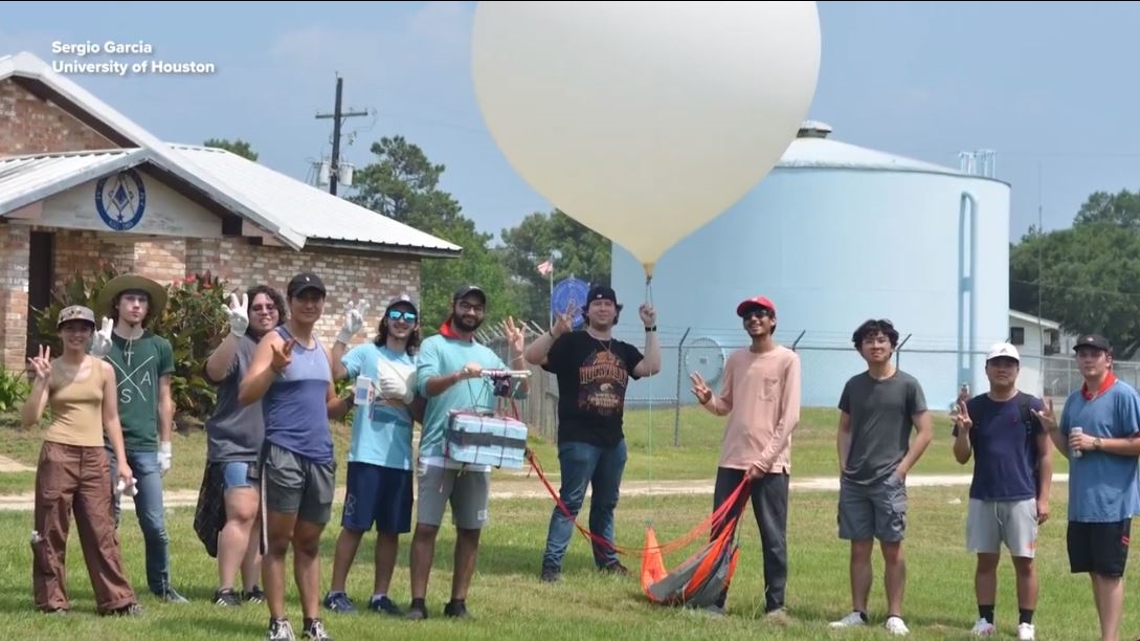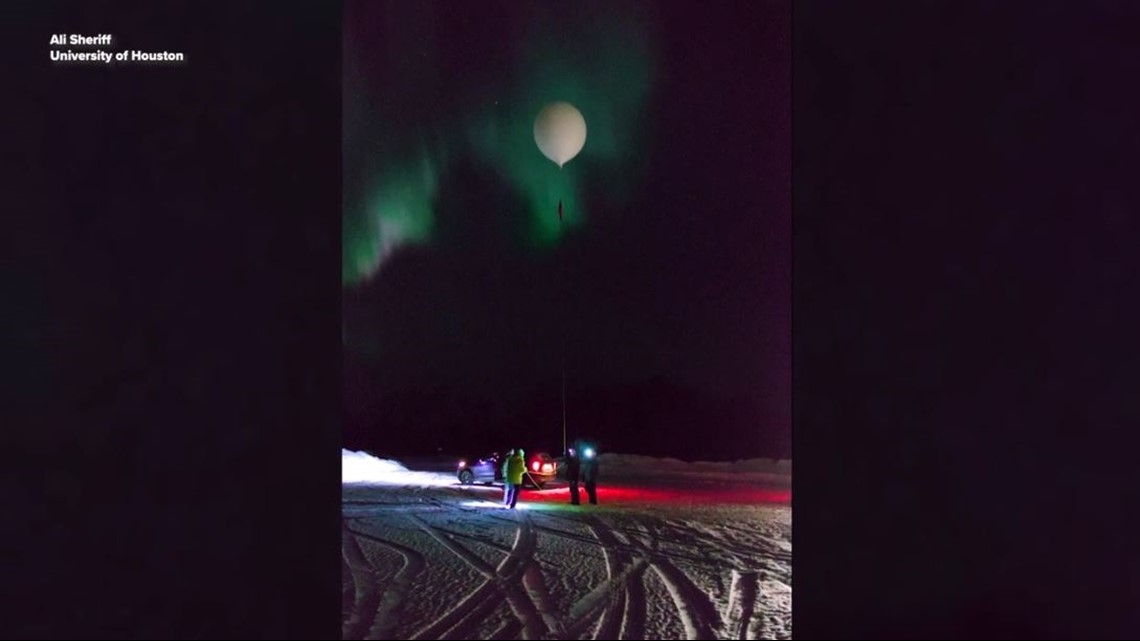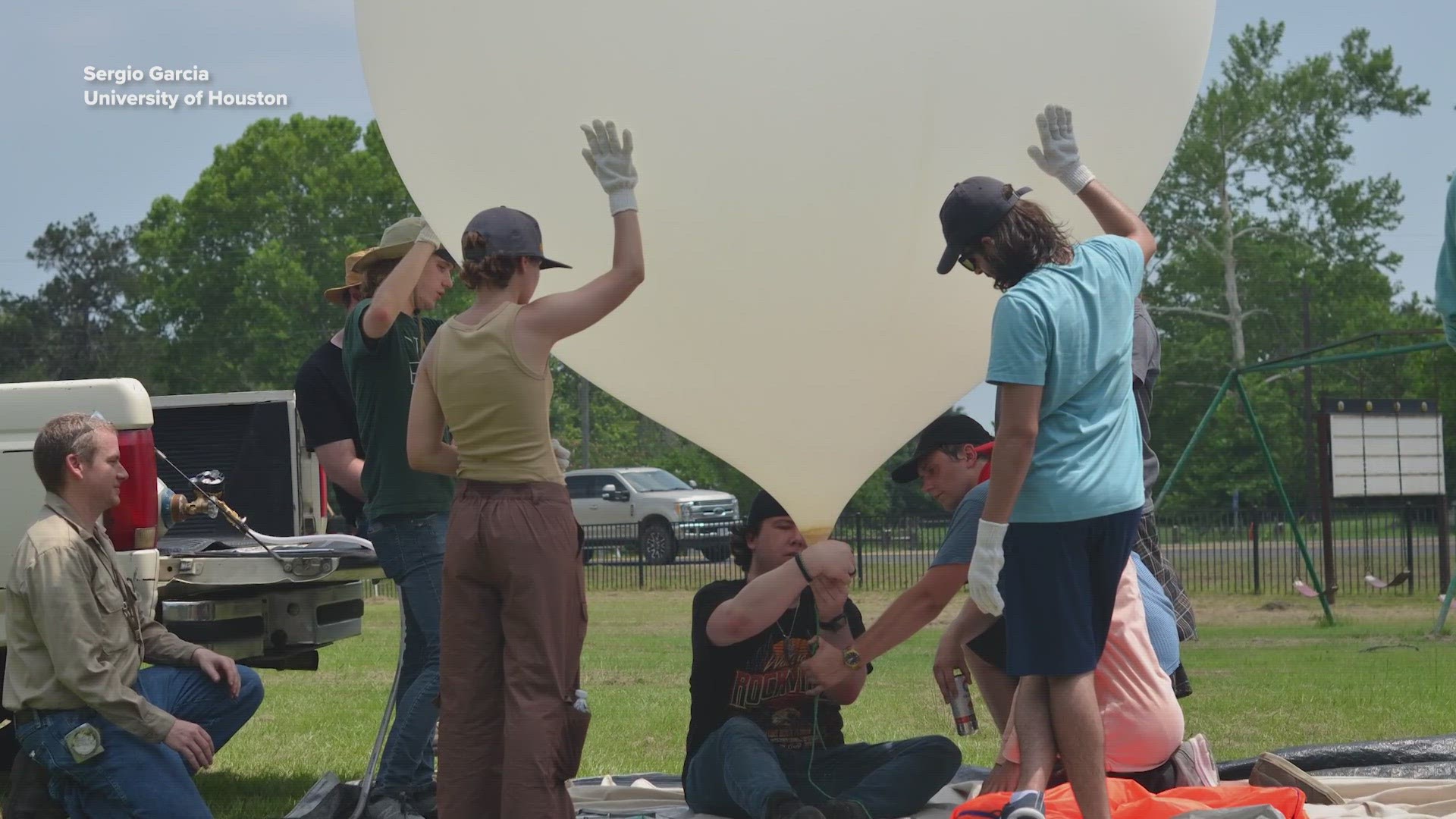SAN ANTONIO — Authorities have been notified. Launch is a go.
During this weekend's annular eclipse, you may notice another unusual sight when you look up: giant white balloons hovering over your community.
The balloons are part of the Nationwide Eclipse Balloon Program, comprised of universities across the U.S. that will be conducting research during this weekend's eclipse.
Starting at 11 a.m. Friday, dozens of the balloons will hover over western San Antonio communities at 80,000 feet. The balloons measure about 100 feet across, or roughly the size of a garage door.
The team in charge of the balloons includes students and faculty from the University of Alaska at Fairbanks, Fisk University and the University of Houston.


"I teach a course in how to build spacecraft that basically runs on a two-year rotation," said Dr. Edgar Bering, professor of physics and electrical engineering at UH. "Because this is a class, we started right away last December and took about half of them to Alaska with us with the previous group so they could train with the University of Alaska team."
Jason Ruszkowski, a physics and political science major at UH, is a student director for the National Eclipse Balloon Program.
"[We're] launching every hour, on the hour, for 30 hours straight. It's gonna be a lot of balloons popping up," Ruszkowski explained. "The overall project's called USIP, or Undergraduate Student Instrument Project... we have a total of 34 students involved."
The purpose of the balloon flights: conducting atmospheric research during the eclipse.
Ruszkowski says a primary focus will be watching for deformities in the clouds.
"We're expecting what's known as 'gravity waves.' Essentially, how the clouds are going to deform into spiral patterns, how that's going to happen and propagate all the way from Portland Oregon down to Corpus Christi," he explained.
The second portion of the project will be livestreaming the entire event.


A 29-person team from the University of Houston will be launching a single balloon from near Bracketville, set to fly over Concan and touch down near Center Point, Texas.
Fisk University will also launch one balloon from Vanderpool, planned to touch down between Comfort and Bandera.
The University of Alaska at Fairbanks, meanwhile, will launch 30 balloons from Utopia.
"They fly up about 1,000 feet per minute. Once it gets to 80,000 feet, we're going to open a contraction on the balloon itself to vent out excess helium, have it float for a little bit and finally cut the balloon down," said Ruszkowski, who stressed that the balloons are also environmentally safe.
Dr. Bering, who is 77 years old, says he could have retired a long time ago. Projects like these, he says, he does for fun.
"I told my students Friday in class that I really wanted them to have fun this trip. This is a part of education that gets lost," Bering explained. "Where is the joy and wonder that we all felt when we first went to school at the age of five? It's here! This is where it is!"
Each student will be graded on their performance.
"This is an extension of curriculum," Bering explained. "I think I'm one of the few universities that's actually doing that."
People west of San Antonio – including the communities of Concan, Comfort and Bandera to Rocksprings, Pearsall and Junction – may catch parts of the flight.
As one team launches the balloon and meets the balloon at the drop site, another team of students will be tracking the object while driving.
When asked for any last-minute thoughts before we ended our interview, Dr. Bering offered the following advice to spectators: "If you're already under the path of the eclipse, stay where you are. We are going to have massive traffic problems and if you don't have to be on the road, don't."
You can watch the livestream on NASA.gov and on YouTube.
If you have any questions about the research underway by the University of Houston, Ruszkowski offered his e-mail: jruszkow@cougarnet.uh.edu. For all you need to know about this weekend's eclipse, KENS 5 has you covered! Visit KENS5.com/eclipse for more.
>TRENDING ON KENS 5 YOUTUBE:

